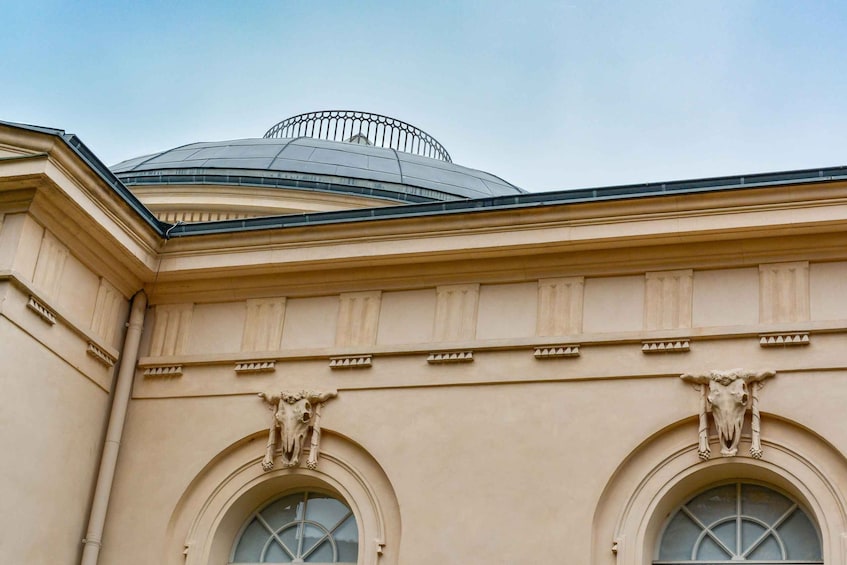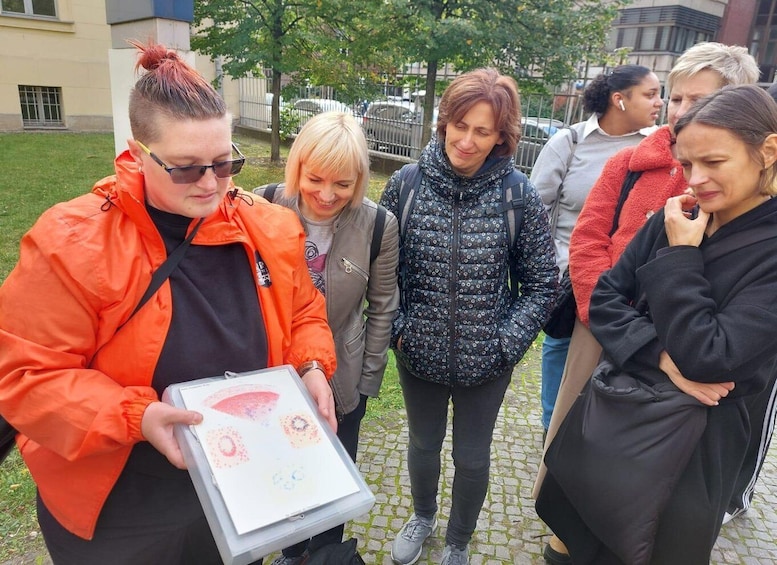- Buat daftar properti Anda
- Dukungan
- Perjalanan
Communication Center icon - Member hemat minimal 10% di lebih dari 100.000 hotel di seluruh dunia apabila login.





Berlin Tur Jalan Kaki Sejarah Rumah Sakit Charite
Fasilitas
- Voucher mobile
- Konfirmasi instan
Ringkasan
- Kagumi arsitektur neo-gotik yang indah di kampus Charite
- Kenali beberapa nama besar dalam sejarah medis
- Jelajahi sejarah Charite selama rezim Nazi dan sosialis
- Bergabunglah bersama kami dalam perjalanan kembali ke abad ke-18 di Teater Anatomi Hewan
- Temukan kisah nyata di balik serial TV Charite
Lokasi aktivitas
- Berlin
- Berlin, Berlin, Germany
Titik Temu/Berangkat
- Robert-Koch-Platz, Robert-Koch-Platz, 10115 Berlin, Germany | Meet by the Robert Koch statue in Robert-Koch-Platz – look for your guide holding an orange umbrella! Please dress warmly in cold weather as most of the tour takes place outside!
- Berlin, Berlin, Germany
Periksa ketersediaan
Maaf aktivitas ini tidak tersedia pada Jum, 12 Des
Apa yang sudah termasuk dan apa yang belum
- Pemandu lokal yang ahli
Sudah termasuk Sudah termasuk - Kunjungan ke Teater Anatomi Hewan (tiket masuk gratis)
Sudah termasuk Sudah termasuk - Masuk ke gedung tempat kegiatan rumah sakit atau universitas berlangsung
Tidak termasuk Tidak termasuk - Akses ke area tertentu di Kampus Charite yang dibatasi untuk tur berpemandu (para tamu dapat menjelajahi beberapa area ini secara mandiri setelah tur)
Tidak termasuk Tidak termasuk
Ketahui sebelum memesan
- Tidak cocok untuk: Anak di bawah 14 tahun
Apa yang bisa Anda harapkan
Tur dibuka dengan kisah pendirian rumah sakit pada tahun 1710, ketika pertama kali dibangun sebagai rumah sakit wabah sederhana untuk melindungi dari wabah yang mendekat. Pada masa-masa awal rumah sakit, metode seperti pertumpahan darah, dosis merkuri dan amputasi adalah hal yang umum dalam merawat orang sakit. Kunjungan ke Teater Veteriner, gedung akademis tertua yang masih ada di Berlin, memberikan wawasan yang menarik tentang bagaimana penyakit hewan ternak dan kuda kavaleri di kota itu dieksplorasi pada abad ke-18.
Tur ini mengelilingi kampus neo-gotik bersejarah Charite, tempat para pionir medis seperti Robert Koch dan Rudolf Virchow membuat penemuan-penemuan inovatif. Tetapi Charite juga merupakan simbol kemajuan sosial, sebagai tempat di mana Rachel Hirsch menjadi wanita pertama yang memegang jabatan profesor medis di Prusia. Pengangkatannya pada tahun 1913 menandai langkah maju yang signifikan bagi perempuan dalam dunia kedokteran, yang mencerminkan pergeseran sikap sosial pada awal abad ke-20, meskipun ia menghadapi perlawanan di dalam institusi tersebut.
Rumah sakit ini juga menjadi saksi sejarah kelam di bawah rezim Nazi. Etika medis diabaikan dan ide-ide kebersihan rasial dipaksakan dengan kejam. Sementara beberapa dokter tetap diam, yang lain secara aktif mengorganisir pemusnahan pasien-pasien kejiwaan. Pada dekade berikutnya, Jerman Timur membanggakan diri atas pencapaian Charite, sementara juga membangun jendela yang menghadap ke Barat yang kapitalis.
Tur ini berakhir di dekat Stasiun Pusat, menjadikannya tempat yang sempurna untuk melanjutkan penjelajahan di Berlin. Mohon kenakan pakaian hangat saat cuaca dingin karena sebagian besar tur berlangsung di luar ruangan!
Lokasi
Lokasi aktivitas
LOB_ACTIVITIES LOB_ACTIVITIES - Berlin
- Berlin, Berlin, Germany
Titik Temu/Berangkat
PEOPLE PEOPLE - Robert-Koch-Platz, Robert-Koch-Platz, 10115 Berlin, Germany | Meet by the Robert Koch statue in Robert-Koch-Platz – look for your guide holding an orange umbrella! Please dress warmly in cold weather as most of the tour takes place outside!
- Berlin, Berlin, Germany